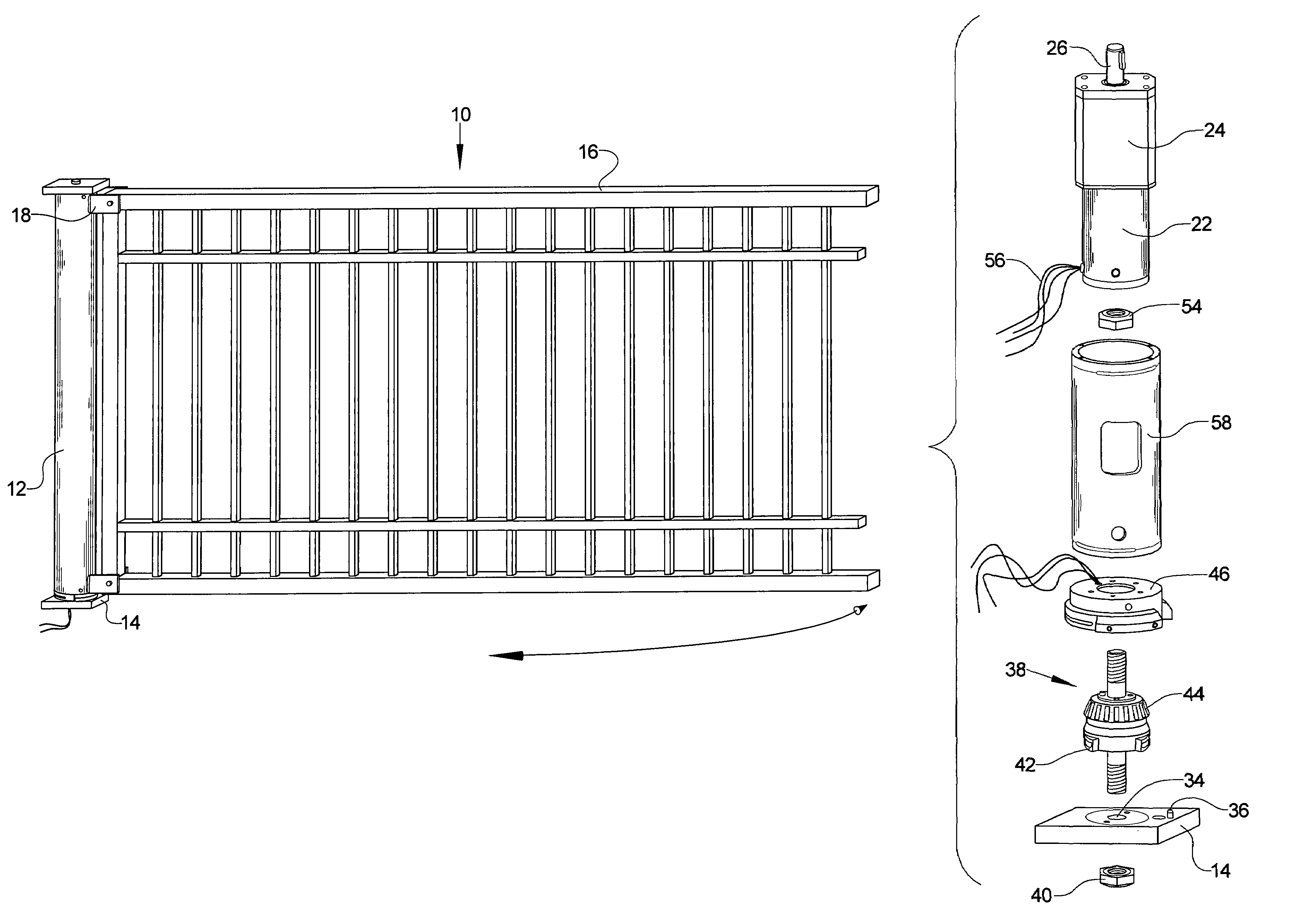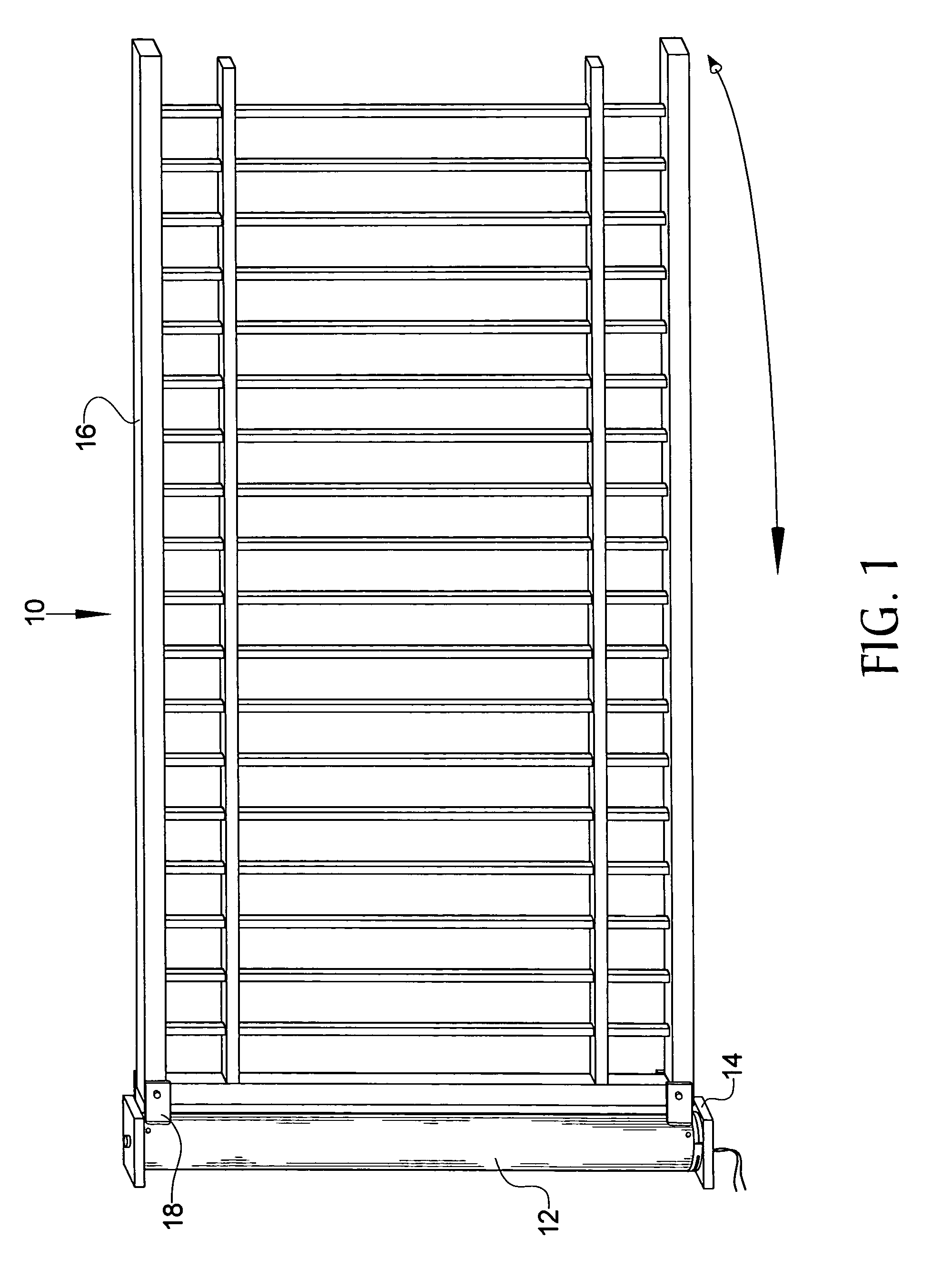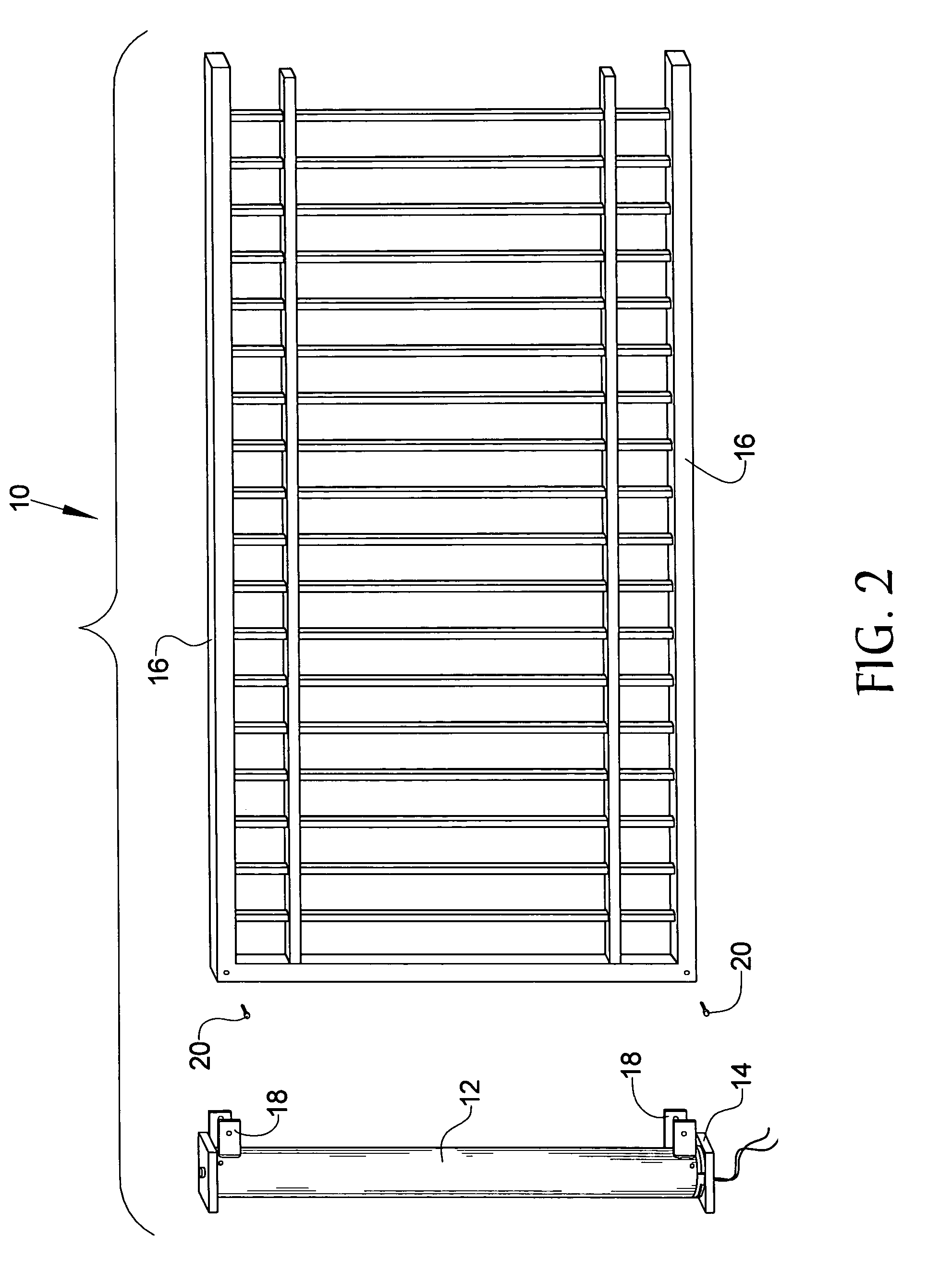Gate opening and closing apparatus
a technology for opening and closing gates, which is applied in the direction of door/window fittings, power supplies, constructions, etc., can solve the problems of requiring additional real estate, not being a good candidate for access control, and not being aesthetically appealing, so as to eliminate the unsightly appearance of the actuation mechanism, eliminate the negative effects, and simple design and construction
- Summary
- Abstract
- Description
- Claims
- Application Information
AI Technical Summary
Benefits of technology
Problems solved by technology
Method used
Image
Examples
Embodiment Construction
[0022]Referring now to the drawings, it is seen that the gate opening and closing apparatus of the present invention, generally denoted by reference numeral 10, is comprised of a post housing 12 that is secured rotatably connected to a base plate 14. The base plate 14 is secured to the ground in any appropriate fashion. A gate 16 is secured to the post housing 12 by appropriate brackets 18 located on the post housing 12 with pins 20 passing through the gate 16 and the and the brackets 18 for securing the gate thereto. The gate 16 is of any appropriate design such as the illustrated post gate, a lattice gate, etc. The gate 16 pivots with respect to the base plate 14 in order to allow the gate 16 to articulate between an open position allowing ingress and egress through the gate 16 and a closed position whereby ingress and egress through the gate is prevented.
[0023]As seen, rotation of the gate 16 with respect to the base plate 14 is accomplished by a motor assembly. Specifically, a m...
PUM
 Login to View More
Login to View More Abstract
Description
Claims
Application Information
 Login to View More
Login to View More - R&D
- Intellectual Property
- Life Sciences
- Materials
- Tech Scout
- Unparalleled Data Quality
- Higher Quality Content
- 60% Fewer Hallucinations
Browse by: Latest US Patents, China's latest patents, Technical Efficacy Thesaurus, Application Domain, Technology Topic, Popular Technical Reports.
© 2025 PatSnap. All rights reserved.Legal|Privacy policy|Modern Slavery Act Transparency Statement|Sitemap|About US| Contact US: help@patsnap.com



